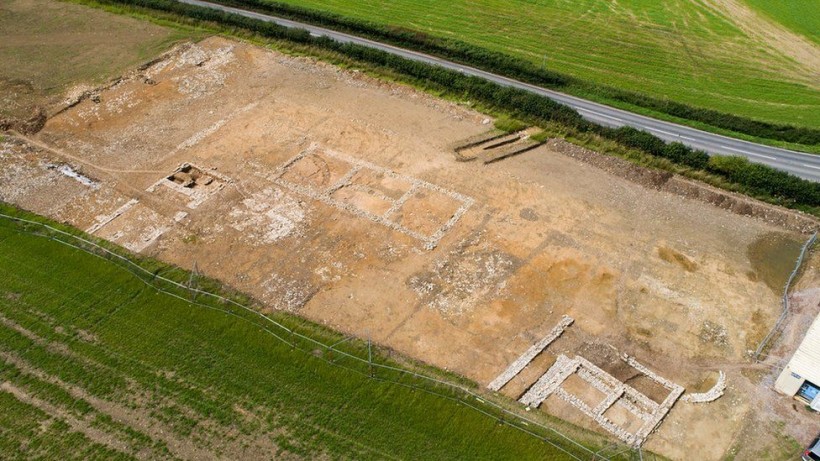A new archaeological find reveals a 1,7000-year-old skeleton that is theorized to be as remains of a mercenary during the reign of ancient Rome. The bones were unearthed at its burial location adjacent to a recently built modern road in the countryside of Wales.
Archeology experts recovered several artifacts alongside the Roman mercenary, including a sword, probably used for its secret job, and some iron age farming tools. Other burial spaces and old ruins surrounded the person's remains.
In the study, scholars excavated over 450 bones from the site near Barry's Five Mile Lane. This discovery from South Wales had five sets of remains identified as present during the reign of the Roman empire.
Five Mile Lane's Roadside Archeological Site

Along with his equipment, the Roman mercenary was near the bones of another person who was most likely decapitated and his head placed on the foot of his remains.
The Five Mile Lane archaeological site in South Wales offers numerous clues to ancient history through an overflowing amount of remains and artifacts dug from its three various spots.
Pits from the bronze age were uncovered from the site. Moreover, the late bronze age crouch burial was identified at the place. Materials from the same period included household tools and hunting paraphernalia, such as a flint arrowhead.
At the northern part of the site, a burial mound kept early bronze age materials, including a beaker, hidden underground.
Early life between mid-to-late bronze age hints was also observed from the Welsh discovery. Alongside this time period, the activities associated with some objects found at the site reflect the smooth transition between the late iron age and the early Roman period.
One ancient material stands out due to its complex design: Roman pottery drawn with a leaping animal similar to the features of either a panther or a lion.
ALSO READ: Neolithic's Oldest City Discovered with Colored Bones Buried Right Beneath House Floors
Discovery from Varying Ancient Periods
When the local government stumbled upon the haul, the authorities immediately asked for help from a professional archeology firm Rubicon Heritage Services, to lead the excavation and corresponding research at the Five Mile Lane.
Experts from the firm explained that there were many surprises their archeologists found along with the project, including the funeral and ceremonial landscapes dating back to the neolithic and bronze age, farming life from the iron age and Roman period, burial mounds from the medieval era, and the top layer that consists of post-medieval landscapes that had been observable until today.
Rubicon Heritage Services director Mark Collard said that they are grateful for the opportunity to be a part of this great project that displays rich historical and archaeological values at the Vale.
The research on the recent Welsh find was made possible through the help of scholars from Cardiff University, specialists from the National Museum of Wales, Cadw, and the Glamorgan-Gwent Archaeological Trust. Daily Mail reports, a scientific paper on the project is expected to be released this year.
RELATED ARTICLE: Machu Picchu History Shows Name a Mistake By Local Farmer, Now Experts Are Trying to Correct It
Check out more news and information on Archeology in Science Times.














